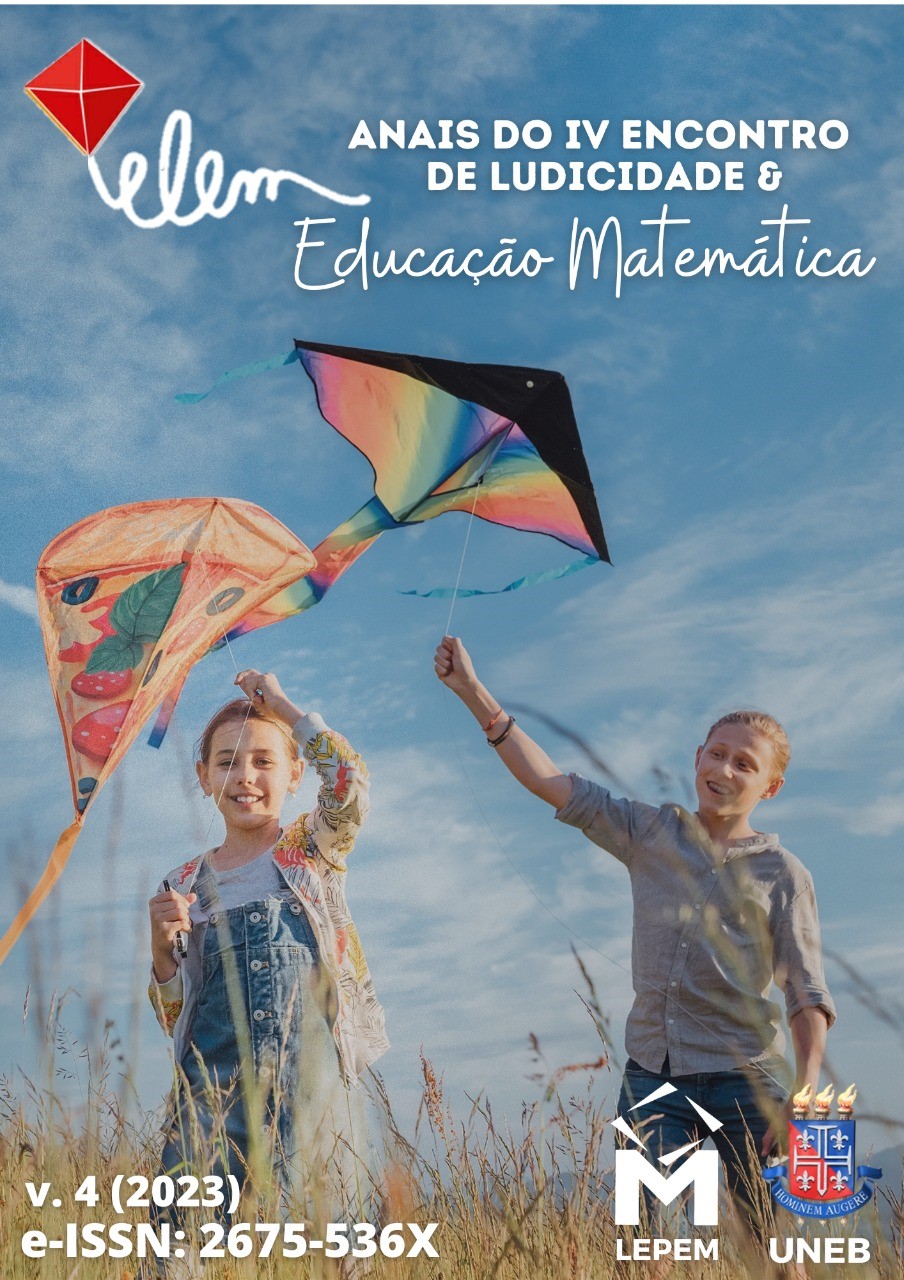The physical and digital game “Trilha do Resto” in understanding the Divisibility Criteria from the perspective of undergraduate Mathematics students
Keywords:
Divisibility Rules. Playfulness. Physical Game. Digital Game.Abstract
The objective of this study is to investigate how undergraduate Mathematics students formalize the Divisibility Rules for Natural numbers by 2, 3, 5, 7, 9 and 11, with the mediation of a playful resource. To do this, we are based on a qualitative research approach. Regarding the instruments for data collection, a questionnaire with open and closed questions was used, as well as observation of the students' actions during the experience of the mini-course entitled “The physical and digital game 'Rest Trail ' and the institutionalization of the concept of multiples and divisors of a natural number”. This mini-course took place at a Federal Public University and was divided into two distinct moments: in the first moment we addressed the digital game and in the second moment the physical game, as well as the process of institutionalizing the divisibility rules. To analyze the results, the concept of multiples and divisors of a natural number was formalization and we delved deeper into the definition of the divisibility rules by 2, 3, 5, 7 and 9. The results demonstrated that the students, when reflecting on the Divisibility Rules from a playful resource, associated them with the way it is presented in Basic Education, not linking it to the way it is treated in the context of Number Theory in Higher Education. Furthermore, they were also able to reflect on the need to diversify methodological approaches in Basic Education and on the use of play in teaching Mathematics.
Downloads
References
ANDRINI, Álvaro; VASCONCELOS, Maria José. Praticando Matemática. 3 ed.
Renovada, São Paulo: editora do Brasil, 2012.
BRASIL. Secretaria de Educação Fundamental. Parâmetros Curriculares Nacionais: Matemática - Ensino de quinta à oitava série. Brasília: MEC/SEF, 1998.
BORIN, J. Jogos e resolução de problemas: uma estratégia para as aulas de matemática. São Paulo, SP: IME-USP, 2004. 100 p.
HUIZINGA, Johan. Natureza e Significado do Jogo. In: HUIZINGA, Johan. Homo ludens: O jogo como elemento da cultura. São Paulo: Perspectiva, 2017, p. 5-31
DALLABONA, Sandra Regina; MENDES, Sueli Maria Schimit. O lúdico na educação infantil: jogar, brincar, uma forma de educar. Revista de divulgação técnico científica do ICPG, v. 1, n. 4, p. 107 – 112, 2004.
MORI, Iracema. Matemática: Ideias e desafios, 18ª ed- São Paulo: Saraiva. 2015.
MUNIZ, Cristiano Alberto. Brincar e jogar: enlaces teóricos e metodológicos no campo da educação matemática. Belo Horizonte: Autêntica, 2010.
PRENSKY, Marc. Aprendizagem baseada em jogos digitais. Brasil: Editora Senac São Paulo, 2021.
BARDIN, Laurence. Análise de conteúdo. Lisboa: Edições 70 Ltda, 2011.
SEVERINO, Antônio Joaquim. Metodologia do Trabalho Científico. 1 Ed. São Paulo: Editora Cortez, 2013, p. 17.
Downloads
Published
How to Cite
Issue
Section
License
Copyright (c) 2023 Dênisson Bispo dos Santos, Suelaine Dos Santos Montalvão, Érica Santana Silveira Nery

This work is licensed under a Creative Commons Attribution-NonCommercial-ShareAlike 4.0 International License.
Uma nova publicação de artigo anteriormente publicado nos Anais do Encontro de Ludicidade e Educação Matemática, fica sujeita à expressa menção da precedência de sua publicação neste periódico, seguindo as normas de referência. Autores que publicam nos Anais do ELEM concordam com os seguintes termos:
-
O Conselho Editorial se reserva ao direito de efetuar, nos originais, alterações de ordem normativa, sintática, ortográfica e bibliográfica com vistas a manter o padrão culto da língua, respeitando, porém, o estilo dos autores. As provas finais poderão ou não ser enviadas aos autores.
-
Autores mantém os direitos autorais e concedem à revista o direito de primeira publicação, com o trabalho simultaneamente licenciado sob a Licença Creative Commons Attribution (CC BY-NC-SA).
-
Autores têm autorização para assumir contratos adicionais separadamente, para distribuição não-exclusiva da versão do trabalho publicada nos Anais do ELEM; exemplo: publicar em repositório institucional ou como capítulo de livro, com reconhecimento de autoria e publicação inicial nos Anais do ELEM.
-
Autores têm permissão e são estimulados a publicar e distribuir seu trabalho online — em repositórios institucionais, página pessoal, rede social ou demais sites de divulgação científica.





